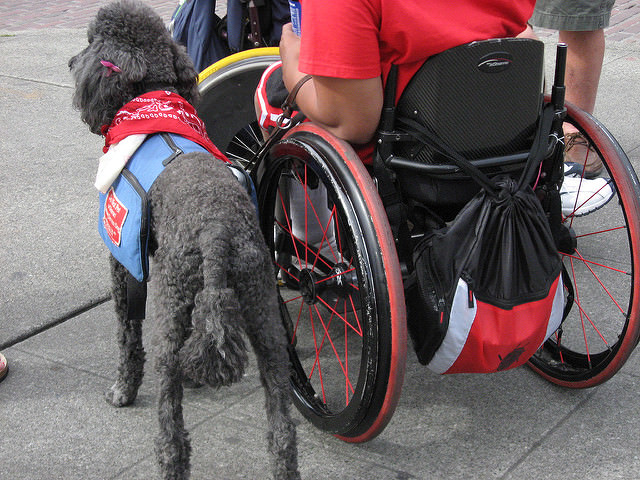Did you know that hundreds of dogs are trained every year by prisoners, either to make them more adoptable or to prepare them to become service dogs? Is it safe? How do the dogs benefit? How do the prisoners benefit? Here’s a quick rundown of 6 things you should know about these programs.
#1 – They save dogs’ lives.

Many of these programs rescue dogs from high-kill shelters. Dogs with behavior problems who would otherwise be unadoptable are trained by prisoners who can dedicate all of their time to rehabilitating the dogs. After several months of training, most of the dogs are able to be adopted into families, and some are trained for service.
RELATED: 7 Best Online Dog Training Courses
#2 – Prisoners have higher success rates of training service dogs than other volunteers.

Prisoners are able to devote much more time to training than volunteers who train dogs in their homes. Being raised in the stress of a prison environment also makes dogs more adaptable and better prepared to adjust to life as a full-time service dog.
People in homes who train dogs for the Leader Dogs for the Blind program in Michigan have a 40 percent success rate. Puppies raised by prisoners have a 70 percent success rate. A New York program, Puppies Behind Bars, has been more successful than traditional training. The program had an 87 percent success rate, compared to 50 percent for dogs trained by volunteers in the public.
#3 – Inmates (and even guards) benefit from being around the dogs.

Even prisoners who aren’t training the dogs show reduced depression, anxiety, and blood pressure just by sharing space with them. Tension is eased between guards and prisoners who are training the dogs as they have something to talk about. And overall aggression goes down inside the prison, making the environment safer for everybody.
#4 – Prisoners are screened first and must earn the privilege of becoming a trainer.

Programs first screen each applicant to ensure they don’t have a documented history of violence or criminal sexual conduct. Any inmate infraction in the last 12 months makes them ineligible, and any infraction occurring while participating in a dog training program permanently expels them.
#5 – It saves money.

It can cost upwards of $30k to train a service dog. Since prisoners are exempt from earning minimum wage and often work for only dollars a day, programs are able to save thousands of dollars training each dog, which means more dogs can be trained for the same amount of money and waiting lists of people waiting for a service dog can shrink.
#6 – Prisoners are more likely to be productive citizens after release.

Inmates learn skills to help them succeed once they reenter society, such as strong communication, reporting, commitment, self-discipline, teamwork, leadership, and empathy. Those who’ve worked in dog-training programs are much less likely to return to prison than those who don’t. Research shows that 70-86% of inmates who have partnered with dog-training (or similar) organizations remain out of prison, compared to only 50% of those not involved in a dog-related program.
For more information, check out these sources: Patriot Paws, 4 Paws For Ability, Colorado CCI, Paws With A Cause, Alvernia, and Mass.gov.
 Toledo, United States.
Toledo, United States.